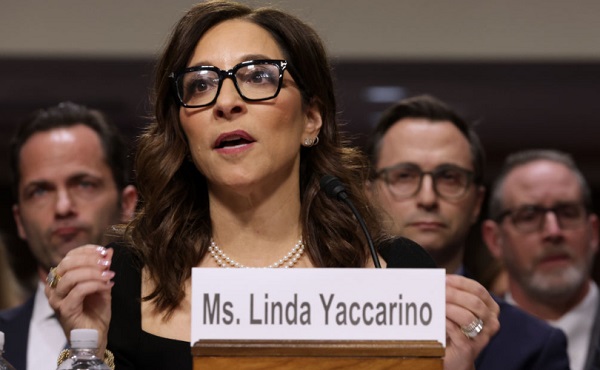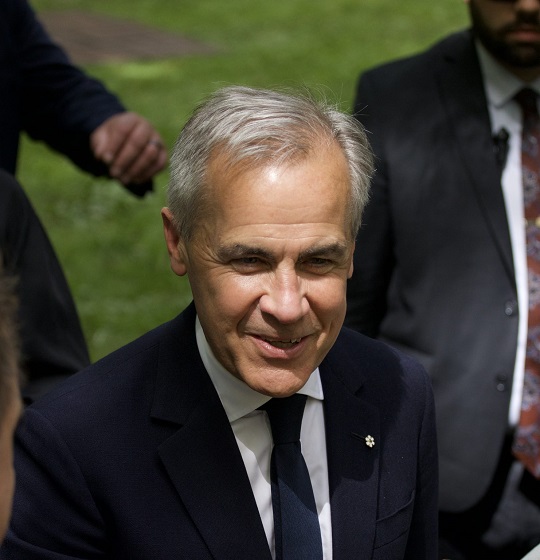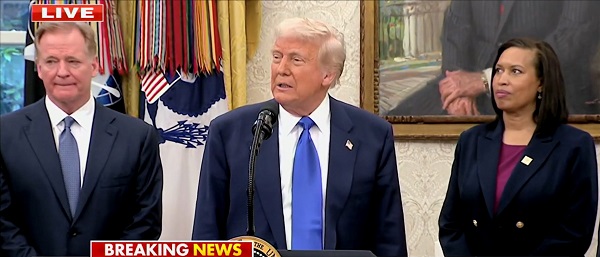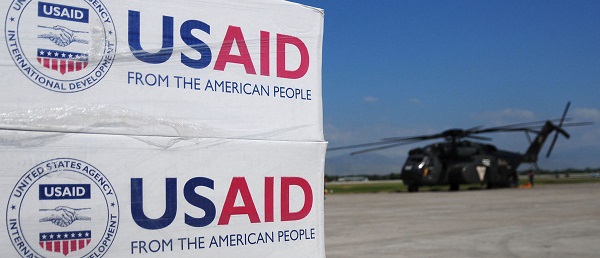Energy
US LNG uncertainty is a reminder of lost Canadian opportunities
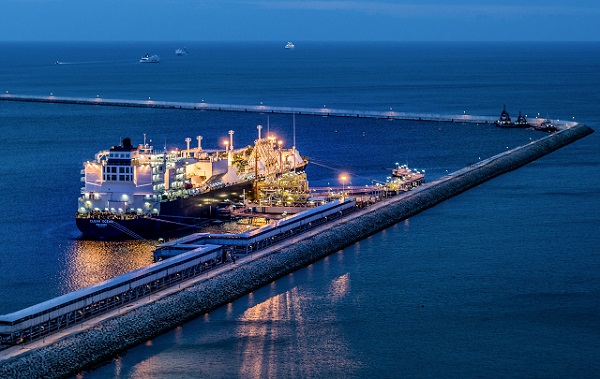
From Resource Works
Canada has missed opportunities to supply Europe with LNG due to political missteps and regulatory barriers, despite having the resources and potential.
For almost three years now, Europe has not been able to figure out how it will replace the cheap, plentiful supply of Russian gas it once enjoyed. Since Russia invaded Ukraine, the EU member states have made drastic moves to curtail their reliance on Russian energy, specifically Russian gas.
In an ideal world, the diversification of the EU’s energy supply would have been Canada’s golden opportunity to use its vast LNG capabilities to fill the gap.
Canada has all the right resources at its disposal to become one of the EU’s premier energy sources, with enormous natural gas reserves lying in the ground and shores upon three of the world’s four oceans. The problem is that Canada lacks both the right infrastructure and the necessary political will to get it built.
The fact that Canada is not a favored supplier of LNG to Europe is the consequence of political missteps and a lack of vision at the highest levels of government. It was reported by the Financial Times that outgoing United States President Joe Biden’s freeze on new LNG export permits and clashes with activists have created uncertainty over future supply growth.
Missteps and onerous regulatory barriers have kept Canada shackled and unable to reach its full potential, leaving us on the sidelines as other countries take the place that should have been Canada’s as an energy supplier for the democratic world.
To this day, European leaders like Greek Prime Minister Kyriakos Mitsotakis, German Chancellor Olaf Scholz, and Polish President Andrzej Duda have indicated their openness to adding Canadian LNG to their domestic supply.
However, no plans for supplying Canadian LNG to Europe have come to fruition. The absence of any commitment from the federal government to take those possibilities seriously is the result of decisions that now look like major mistakes in hindsight.
Two of these are cancelled energy projects on the Atlantic coast: the Energy East oil pipeline and the proposed expansion of an LNG terminal in New Brunswick.
Canada’s Pacific coast is now a hub of LNG development, with three planned facilities well underway, and there are hungry markets in Asia ready to receive their products. It is a shame that the Atlantic coast is being left behind during Canada’s burgeoning LNG renaissance. The economic situation in the Maritimes has long been challenging, leading to emigration to the Western provinces and stagnation back at home.
LNG projects in British Columbia have proven to be job machines and drivers of economic revitalization in formerly impoverished regions that were gutted when fishing, mining, and forestry went downhill in the 1980s.
The potential to both help Atlantic Canada level back up economically while becoming the bridge for energy exports to Europe was halted by the cancellation of the Energy East pipeline and a proposed LNG terminal in Saint John, New Brunswick.
Proposed by TransCanada (since renamed to TC Energy) to the National Energy Board in 2014, Energy East would have been a 4,600-kilometer pipeline with the capacity to transport over a million barrels of crude oil from Alberta to refineries in New Brunswick and Quebec. While it is true that Europe is more interested in LNG than crude oil, the completion of one great project encourages more and could have gotten the ball rolling on further energy infrastructure.
Had Energy East been constructed, it would have served as a symbol to investors and energy industry players that Canada was serious about west-to-east projects. Unfortunately, in 2017, TransCanada withdrew from the project due to regulatory disagreements and uncertainty.
In 2019, the federal government passed Bill C-69, AKA the “no more pipelines” law, leading to even more complex and restrictive regulations for new energy projects. When there should have been momentum on energy infrastructure building, there came only more cascading bad news.
A proposed expansion of Repsol’s LNG terminal in Saint John, New Brunswick, another potential gateway for Canadian energy to get through to Europe, was abandoned due to the projected high costs and poor business case.
The idea of LNG on the East Coast making for a poor business case has been repeated by the federal government many times. However, in documents accessed by The Logic, it was revealed that Global Affairs Canada has, in fact, stated the opposite, and that there was great potential to increase rail and pipeline networks on the Atlantic.
Furthermore, Canada is capable of shipping LNG from the Western provinces to the East Coast because of our access to the vast pipeline networks of the United States.
As a result of these regrettable decisions, Canadians can only watch as lost opportunities to provide LNG to the democratic world are filled by other countries. Every downturn or disruption in the energy exports of other countries is a sore reminder of Canada’s lost opportunities.
Canada needs more vision, certainty, and drive when it comes to building the future of Canadian energy. In the words of Newfoundland and Labrador Premier Andrew Furey, “We will be all in on oil and gas for decades and decades to come…because the world needs us to be.”
Energy
Activists using the courts in attempt to hijack energy policy

2016 image provided by Misti Leon, left, sits with her mom, Juliana Leon. Misti Leon is suing several oil and gas companies in one of the first wrongful-death claims in the U.S. seeking to hold the fossil fuel industry accountable for its role in the changing climate.

From the Daily Caller News Foundation
By Jason Isaac
They twist yesterday’s weather into tomorrow’s crisis, peddle apocalyptic forecasts that fizzle, and swap “global warming” for “climate change” whenever the narrative demands. They sound the alarm on a so-called climate emergency — again and again.
Now, the Left has plunged to a new low: weaponizing the courts with a lawsuit in Washington State that marks a brazen, desperate escalation. This isn’t just legal maneuvering—it’s the exploitation of personal tragedy in service of an unpopular anti-energy climate crusade.
Consider the case at the center of a new legal circus: Juliana Leon, 65, tragically died of hyperthermia during a 100-mile drive in a car with broken air conditioning, as a brutal heat wave pushed temperatures to 108 degrees Fahrenheit.
Dear Readers:
As a nonprofit, we are dependent on the generosity of our readers.
Please consider making a small donation of any amount here.
Thank you!
The lawsuit leaps from this heartbreaking event to a sweeping claim: that a single hot day is the direct result of global warming.
The lawsuit preposterously links a very specific hot weather event to theorized global warming. Buckle up—their logic is about to take a wild ride.
Some activist scientists have further speculated that what may be a gradual long-term trend of slight warming thought to be both cyclical and natural, might be possibly exacerbated by the release of greenhouse gases. Some of these releases are the result of volcanic activity while some comes from human activities, including the burning of oil, natural gas and coal.
Grabbing onto that last, unproven thread, the plaintiffs have zeroed in on a handful of energy giants—BP, Chevron, Conoco, Exxon, Phillips 66, Shell, and the Olympic Pipe Company—accusing them of causing Leon’s death. Apparently, these few companies are to blame for the entire planet’s climate, while other oil giants, coal companies, and the billions of consumers who actually use these fuels get a free pass.
Meanwhile, “climate journalists” in the legacy media have ignored key details that will surely surface in court. Leon made her journey in a car with no air conditioning, despite forecasts warning of dangerous heat. She was returning from a doctor’s visit, having just been cleared to eat solid food after recent bariatric surgery.
But let’s be clear: this lawsuit isn’t about truth, justice, or even common sense. It’s lawfare, plain and simple.
Environmental extremists are using the courts to hijack national energy policy, aiming to force through a radical agenda they could never pass in Congress. A courtroom win would mean higher energy prices for everyone, the potential bankruptcy of energy companies, or their takeover by the so-called green industrial complex. For the trial lawyers, these cases are gold mines, with contingency fees that could reach hundreds of millions.
This particular lawsuit was reportedly pitched to Leon’s daughter by the left-leaning Center for Climate Integrity, a group bankrolled by billionaire British national Christopher Hohn through his Children’s Investment Fund Foundation and by the Rockefeller Foundation. It’s yet another meritless claim in the endless list of climate lawsuits that are increasingly being tossed out of courts across the country.
Earlier this year, a Pennsylvania judge threw out a climate nuisance suit against oil producers brought by Bucks County, citing lack of jurisdiction. In New York, Supreme Court Justice Anar Patel dismissed a massive climate lawsuit by New York City, pointing out the city couldn’t claim both public awareness and deception by oil companies in the same breath.
But the Washington State case goes even further, threatening to set a dangerous precedent: if it moves forward, energy companies could face limitless liability for any weather-related injury. Worse, it would give unwarranted credibility to the idea — floated by a leftwing activist before the U.S. Senate — that energy executives could be prosecuted for homicide, a notion that Republican Texas Sen. Ted Cruz rightly called “moonbeam, wacky theory.”
The courts must keep rejecting these absurd lawfare stunts. More importantly, America’s energy policy should be set by Congress—elected and accountable—not by a single judge in a municipal courtroom.
Jason Isaac is the founder and CEO of the American Energy Institute. He previously served four terms in the Texas House of Representatives.
Alberta
Temporary Alberta grid limit unlikely to dampen data centre investment, analyst says
From the Canadian Energy Centre
By Cody Ciona
‘Alberta has never seen this level and volume of load connection requests’
Billions of investment in new data centres is still expected in Alberta despite the province’s electric system operator placing a temporary limit on new large-load grid connections, said Carson Kearl, lead data centre analyst for Enverus Intelligence Research.
Kearl cited NVIDIA CEO Jensen Huang’s estimate from earlier this year that building a one-gigawatt data centre costs between US$60 billion and US$80 billion.
That implies the Alberta Electric System Operator (AESO)’s 1.2 gigawatt temporary limit would still allow for up to C$130 billion of investment.
“It’s got the potential to be extremely impactful to the Alberta power sector and economy,” Kearl said.
Importantly, data centre operators can potentially get around the temporary limit by ‘bringing their own power’ rather than drawing electricity from the existing grid.
In Alberta’s deregulated electricity market – the only one in Canada – large energy consumers like data centres can build the power supply they need by entering project agreements directly with electricity producers.
According to the AESO, there are 30 proposed data centre projects across the province.
The total requested power load for these projects is more than 16 gigawatts, roughly four gigawatts more than Alberta’s demand record in January 2024 during a severe cold snap.
For comparison, Edmonton’s load is around 1.4 gigawatts, the AESO said.
“Alberta has never seen this level and volume of load connection requests,” CEO Aaron Engen said in a statement.
“Because connecting all large loads seeking access would impair grid reliability, we established a limit that preserves system integrity while enabling timely data centre development in Alberta.”
As data centre projects come to the province, so do jobs and other economic benefits.
“You have all of the construction staff associated; electricians, engineers, plumbers, and HVAC people for all the cooling tech that are continuously working on a multi-year time horizon. In the construction phase there’s a lot of spend, and that is just generally good for the ecosystem,” said Kearl.
Investment in local power infrastructure also has long-term job implications for maintenance and upgrades, he said.
“Alberta is a really exciting place when it comes to building data centers,” said Beacon AI CEO Josh Schertzer on a recent ARC Energy Ideas podcast.
“It has really great access to natural gas, it does have some excess grid capacity that can be used in the short term, it’s got a great workforce, and it’s very business-friendly.”
The unaltered reproduction of this content is free of charge with attribution to the Canadian Energy Centre.
-
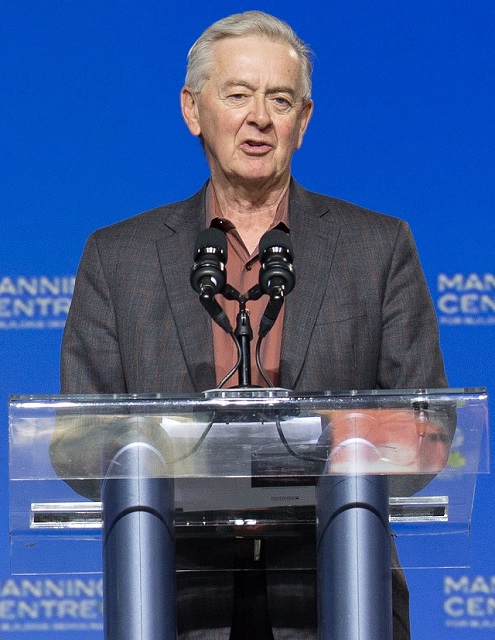
 Opinion1 day ago
Opinion1 day agoPreston Manning: Three Wise Men from the East, Again
-

 Addictions1 day ago
Addictions1 day agoWhy B.C.’s new witnessed dosing guidelines are built to fail
-

 Uncategorized1 day ago
Uncategorized1 day agoCNN’s Shock Climate Polling Data Reinforces Trump’s Energy Agenda
-
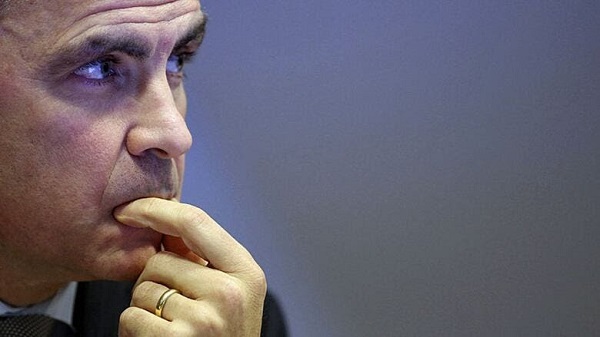
 Business2 days ago
Business2 days agoCarney government should apply lessons from 1990s in spending review
-

 Entertainment2 days ago
Entertainment2 days agoStudy finds 99% of late-night TV guests in 2025 have been liberal
-

 Frontier Centre for Public Policy1 day ago
Frontier Centre for Public Policy1 day agoCanada’s New Border Bill Spies On You, Not The Bad Guys
-

 Daily Caller16 hours ago
Daily Caller16 hours ago‘Strange Confluence Of Variables’: Mike Benz Wants Transparency Task Force To Investigate What Happened in Butler, PA
-

 National9 hours ago
National9 hours agoCanada’s immigration office admits it failed to check suspected terrorists’ background
